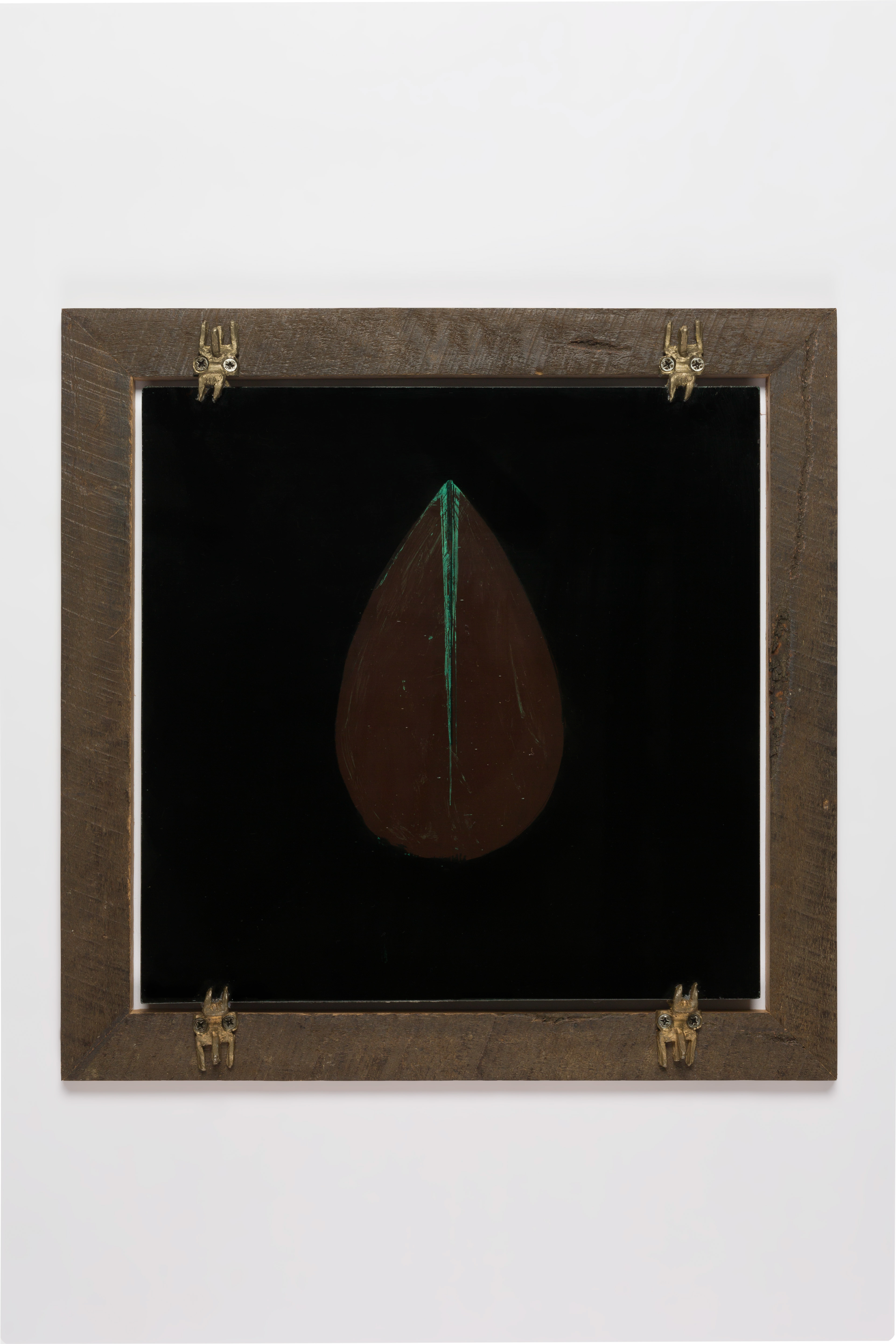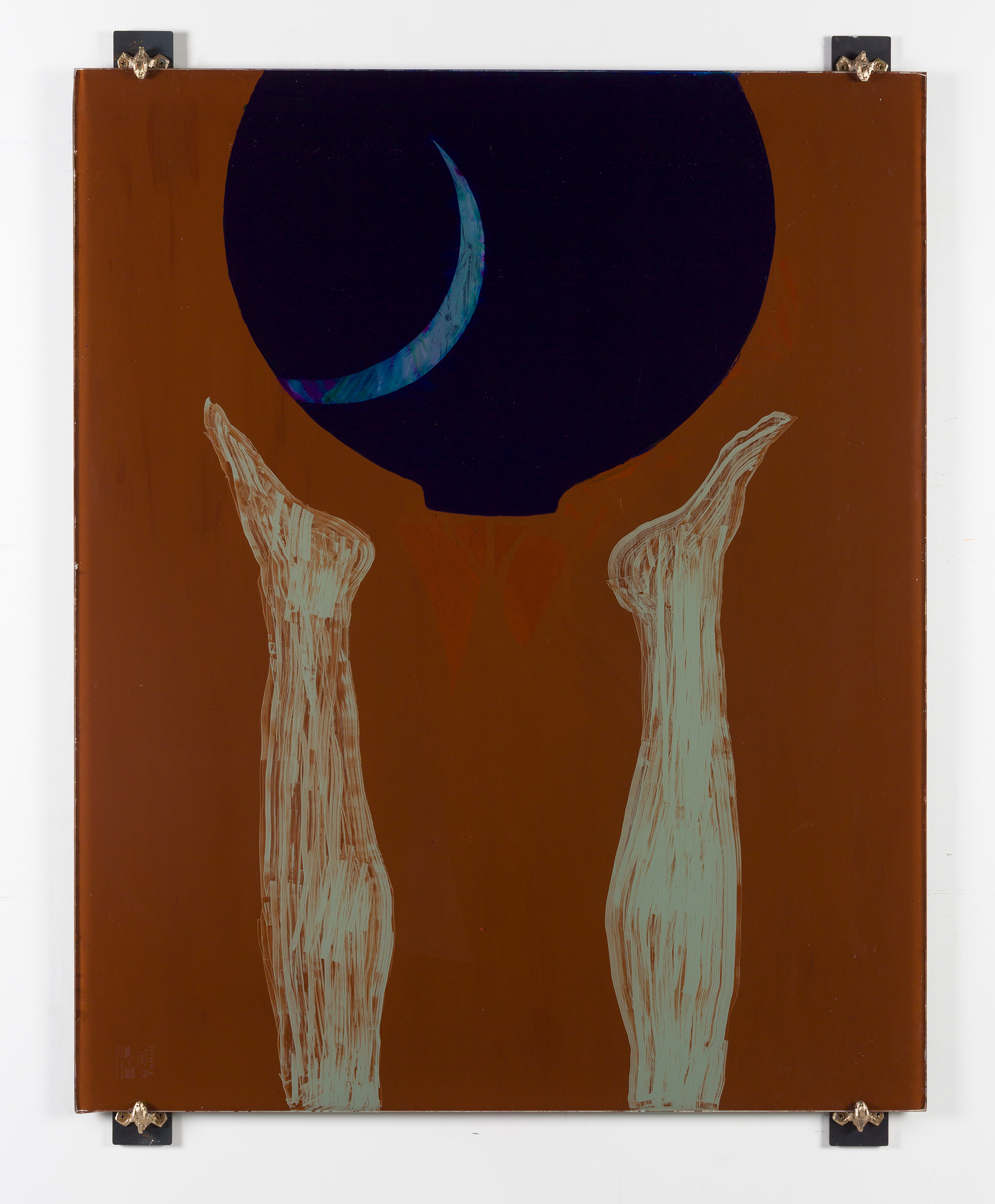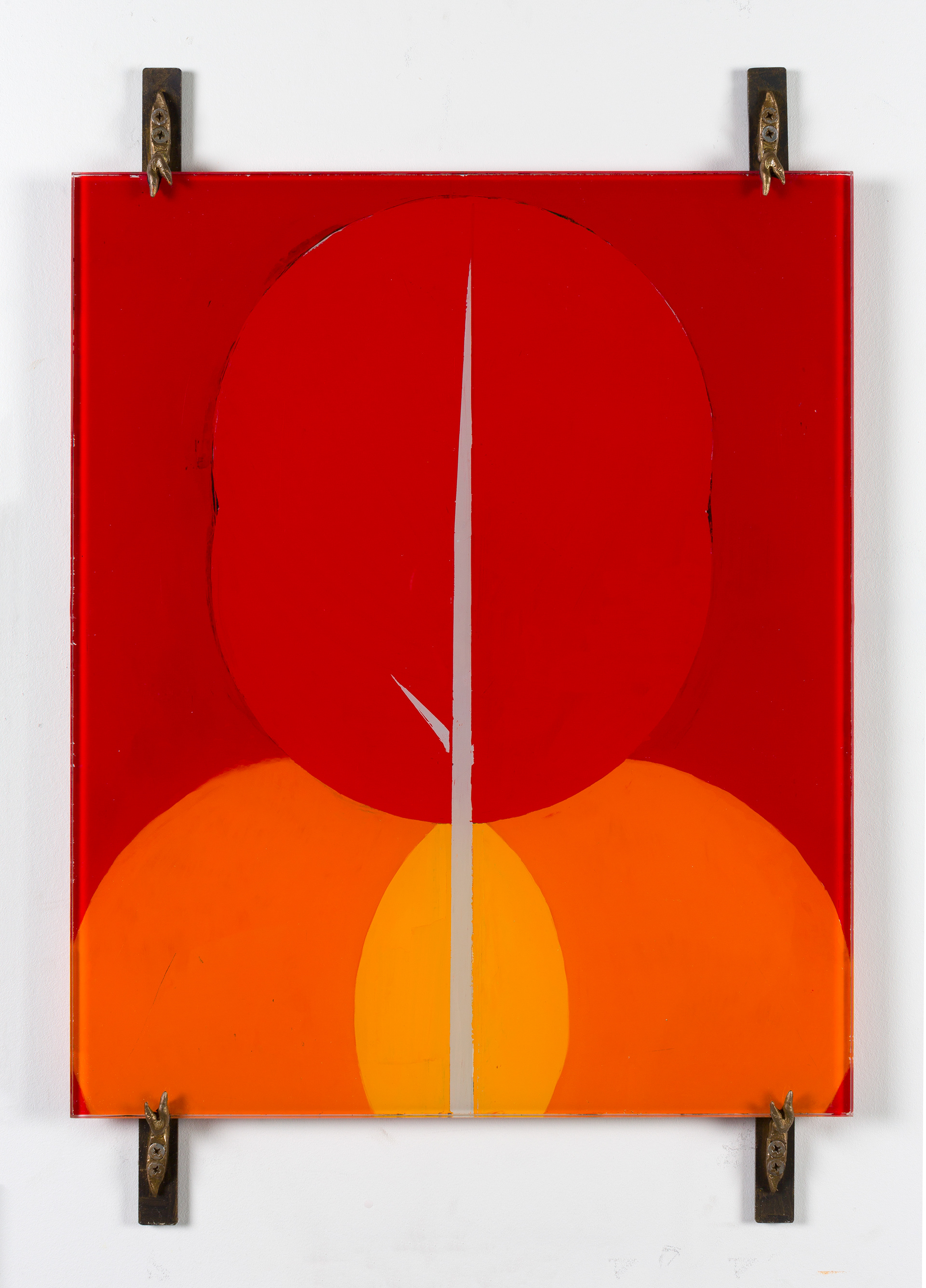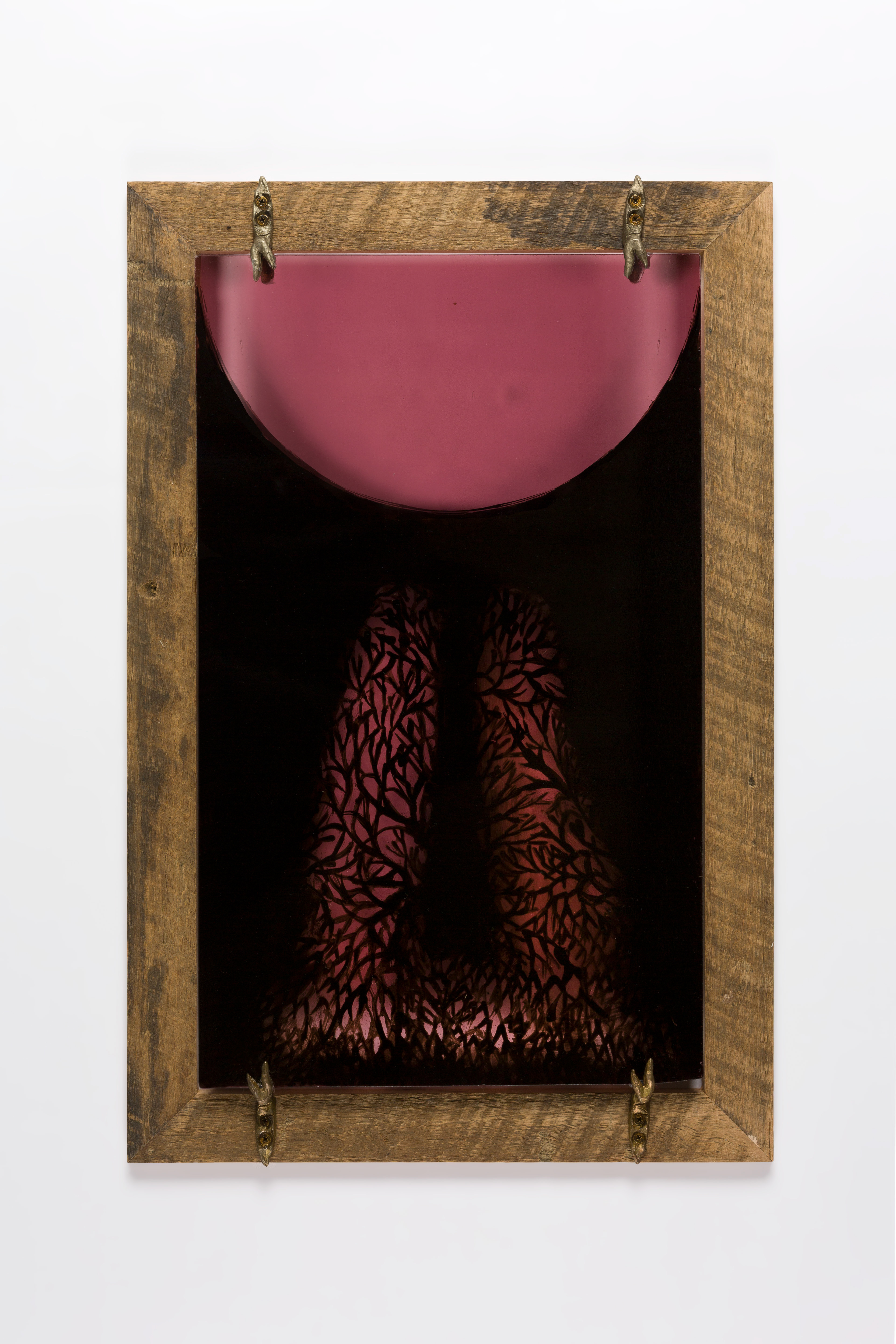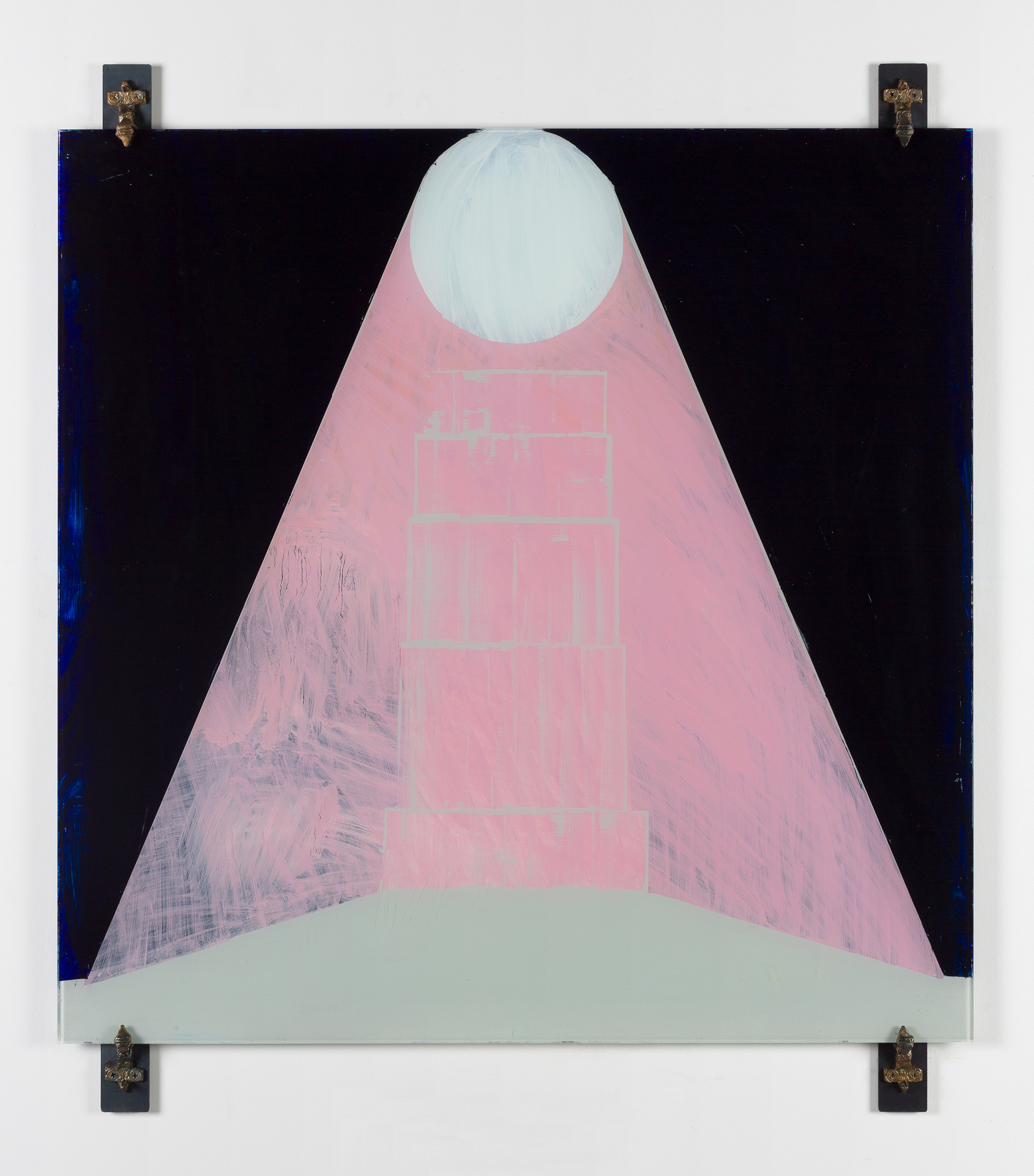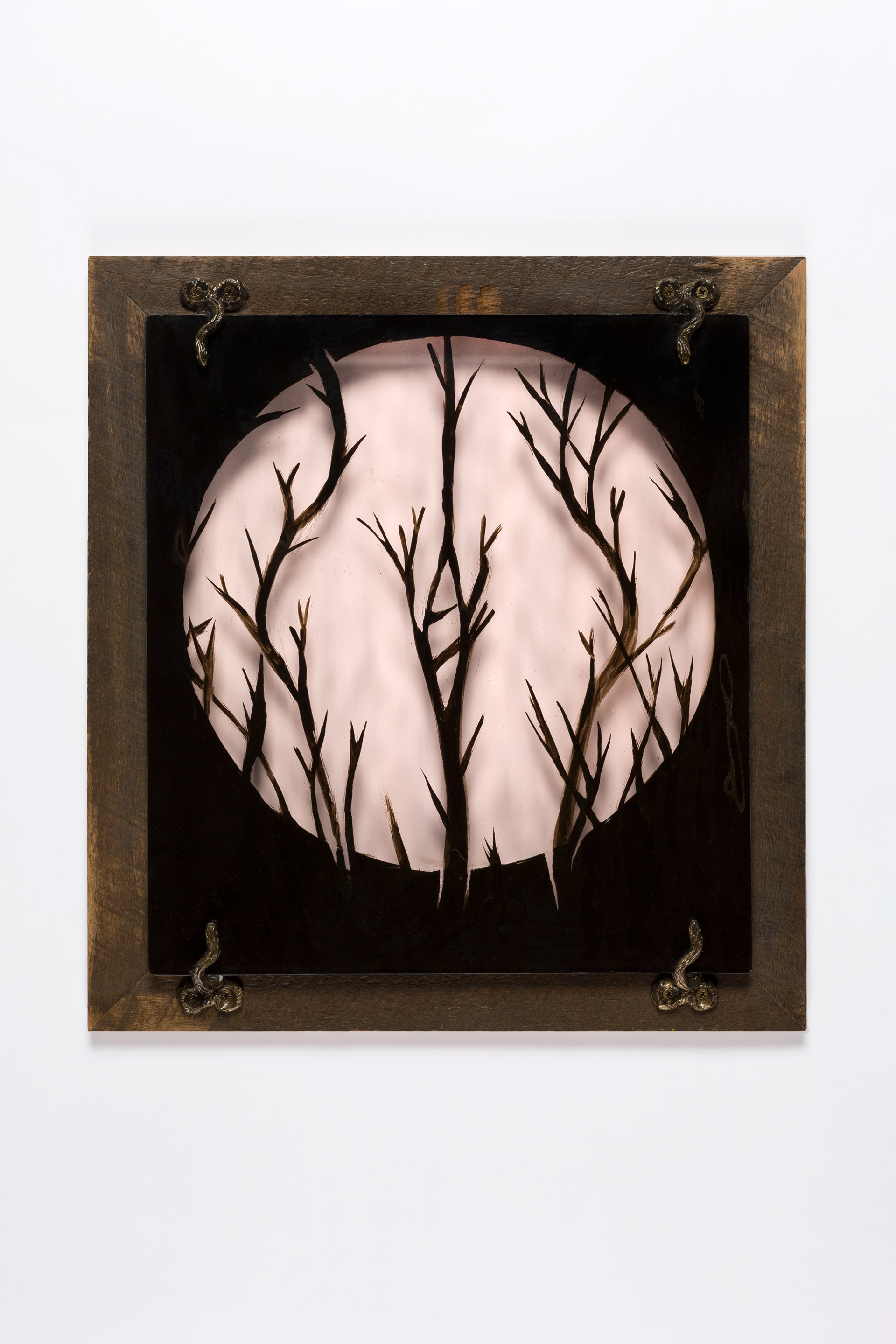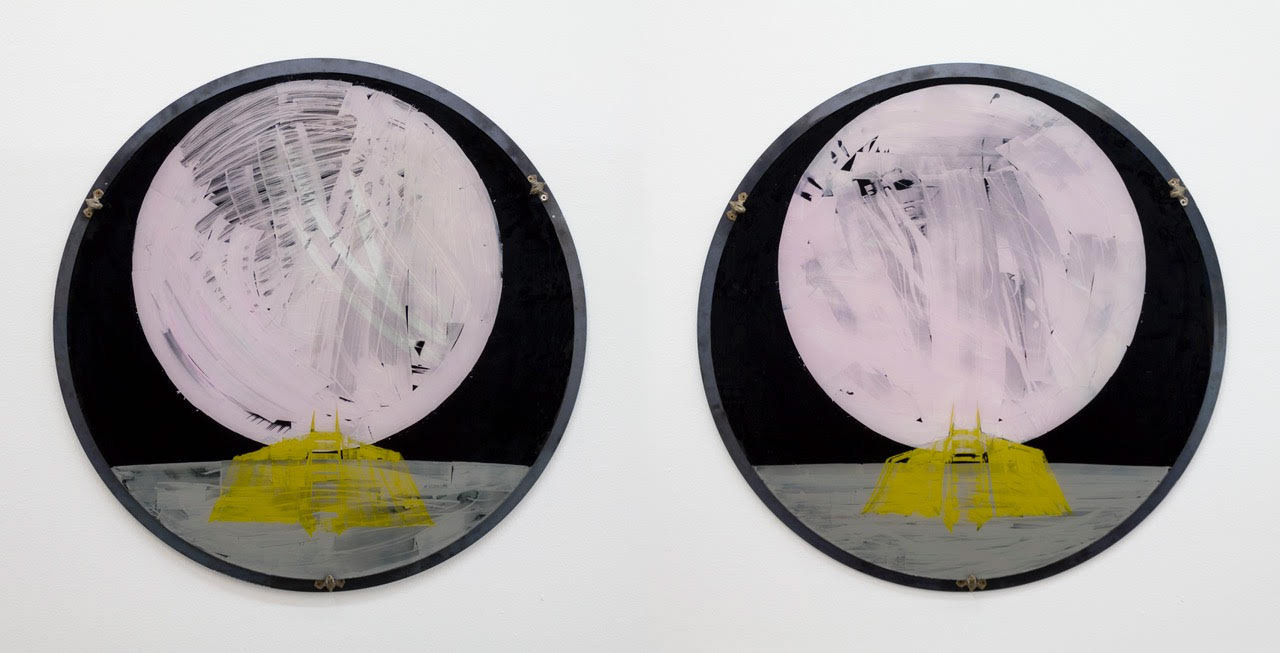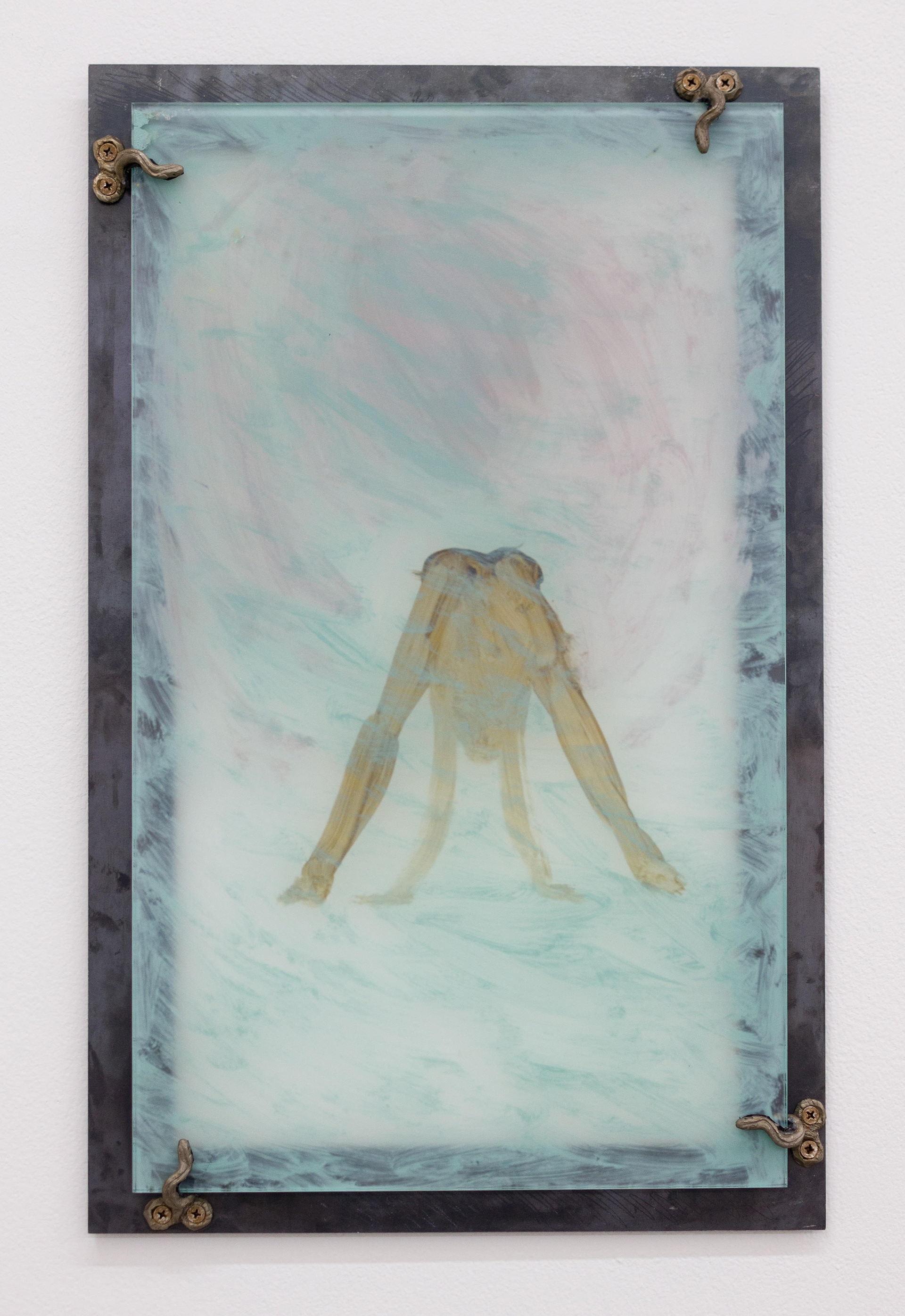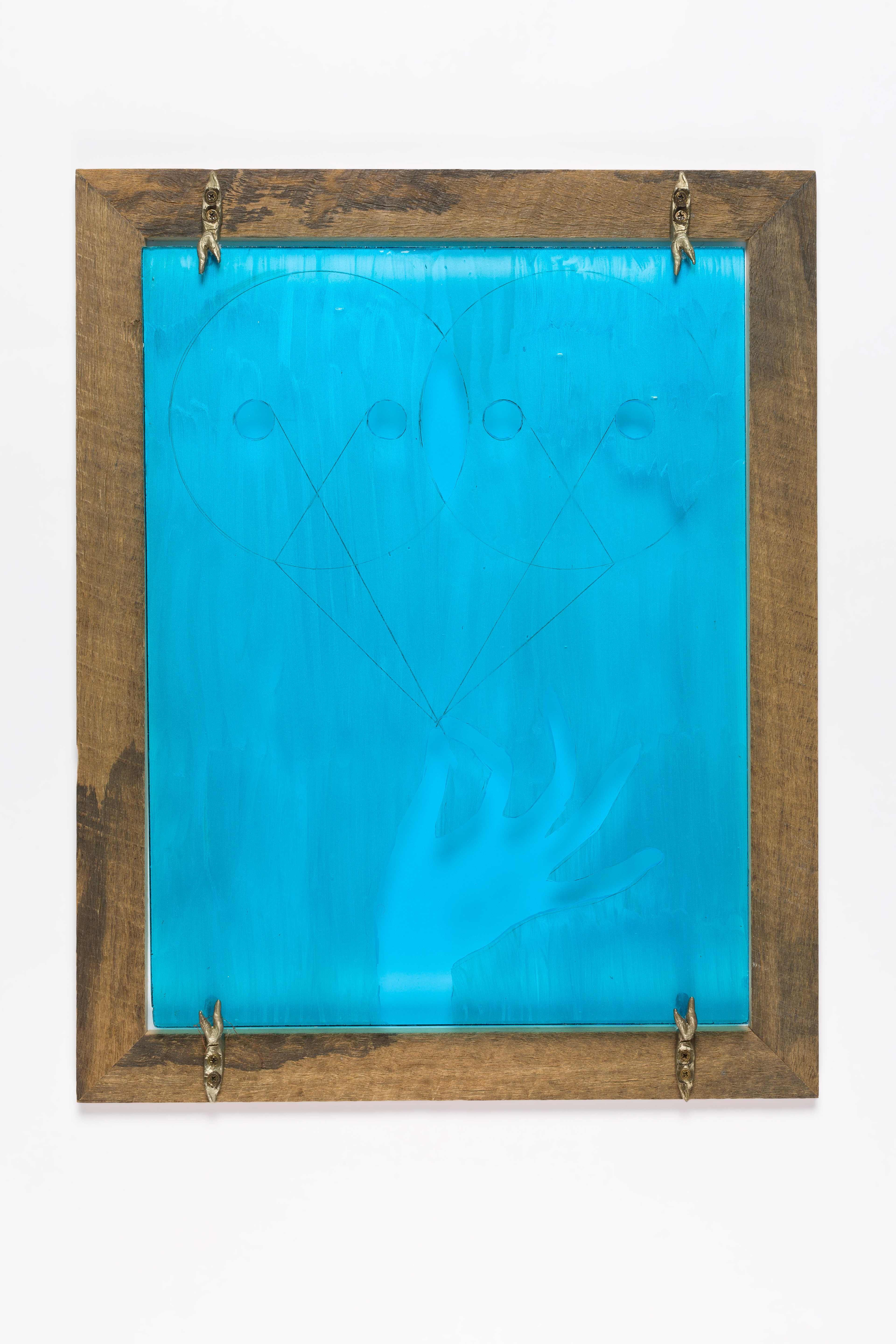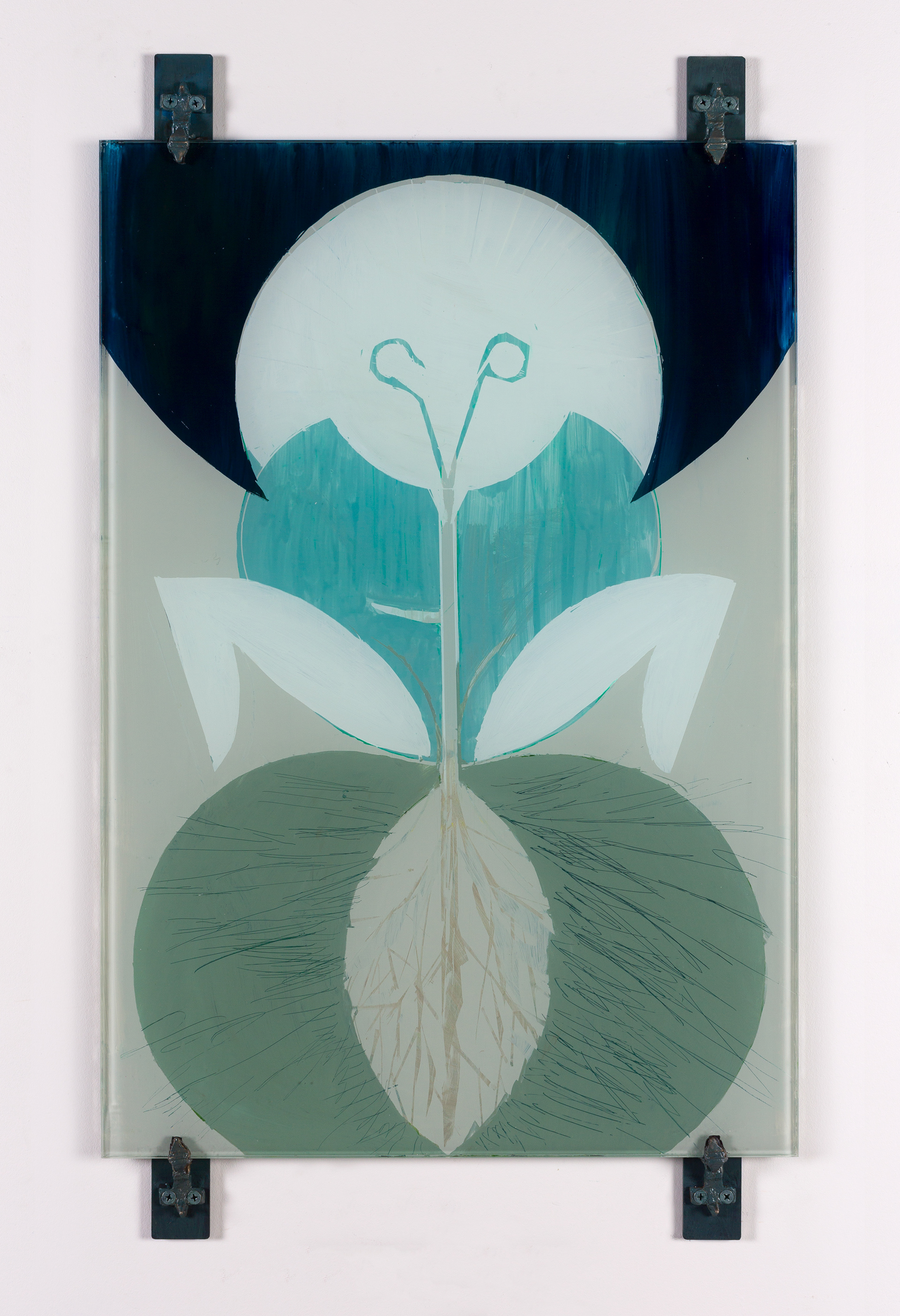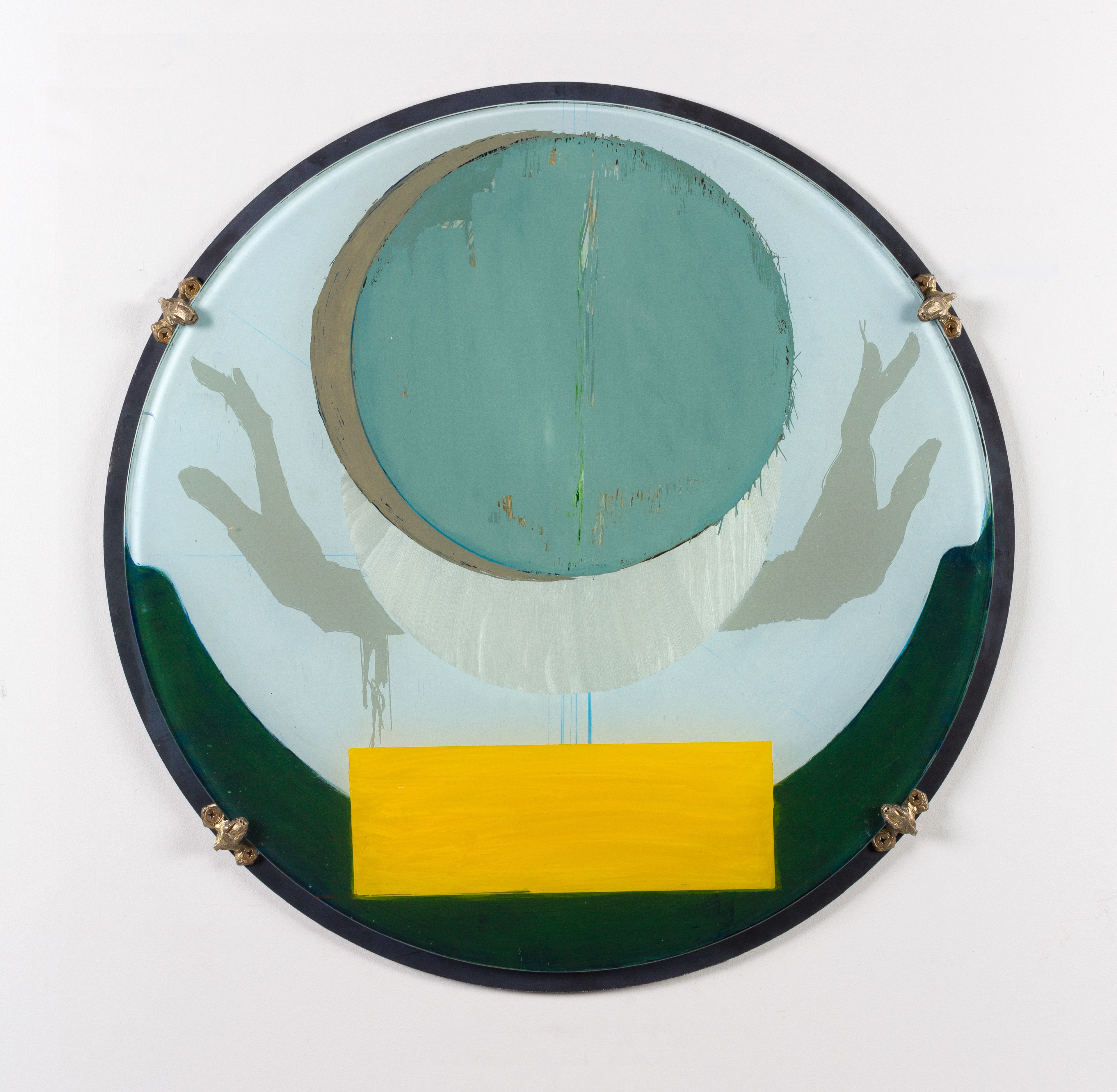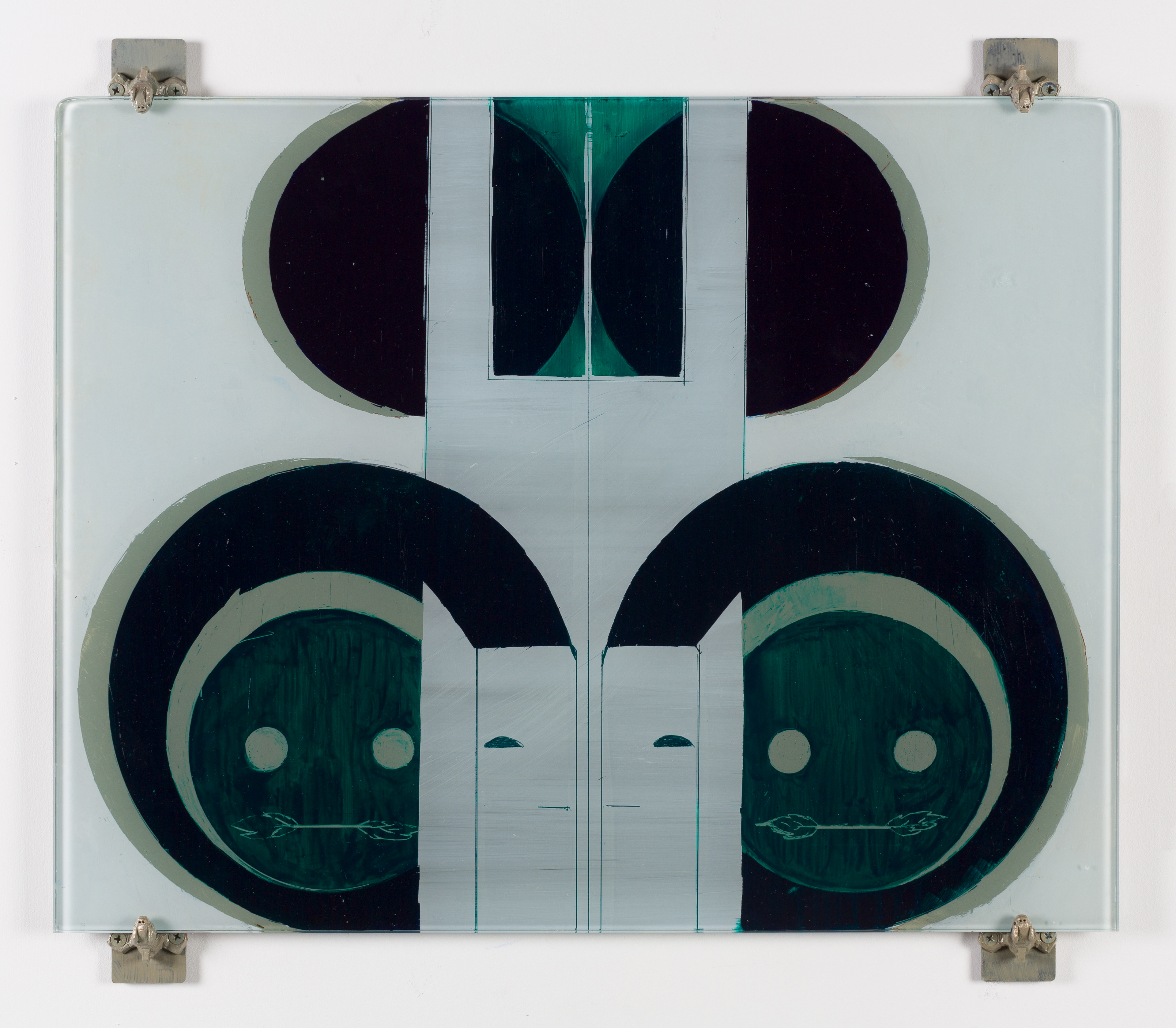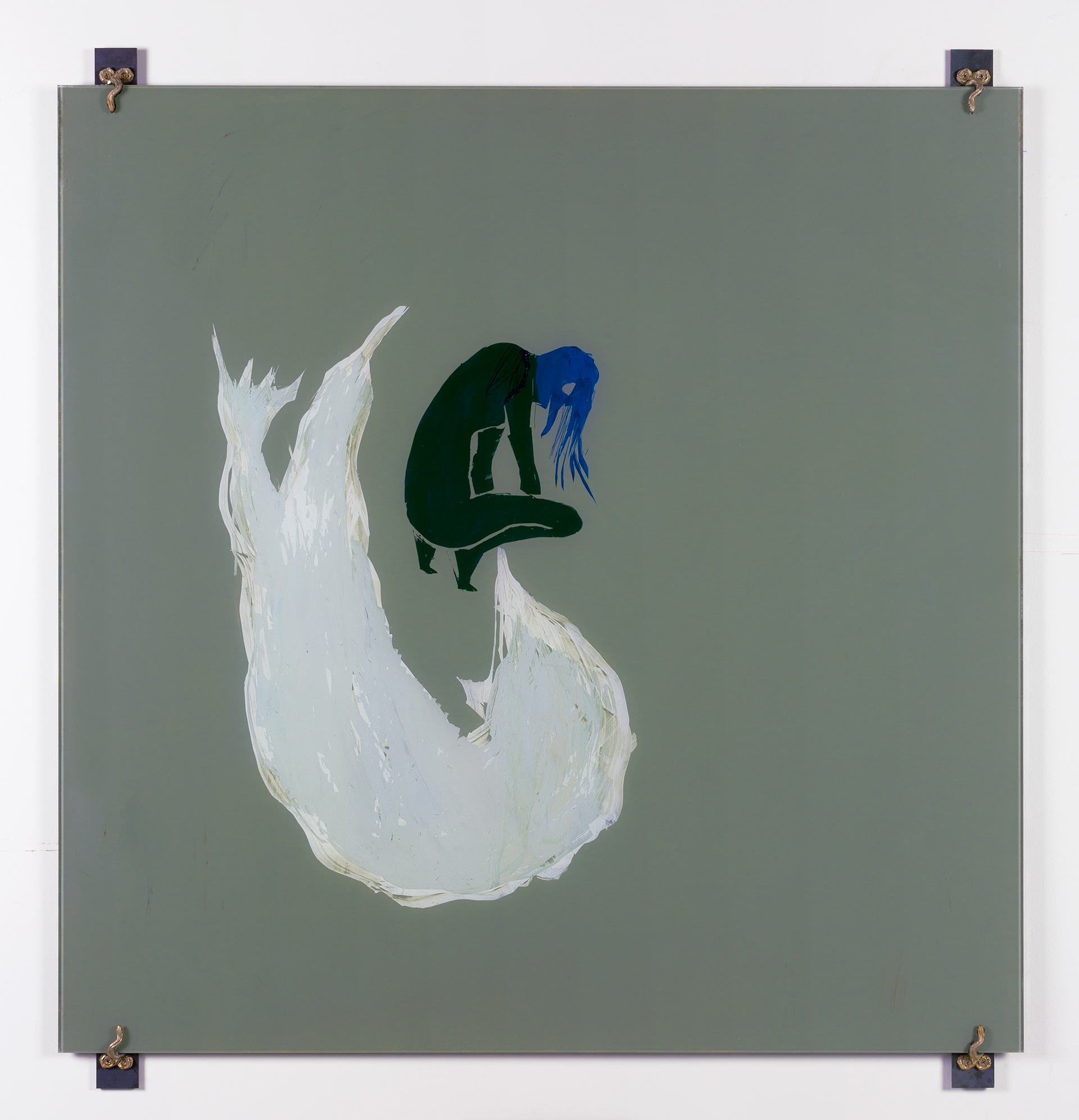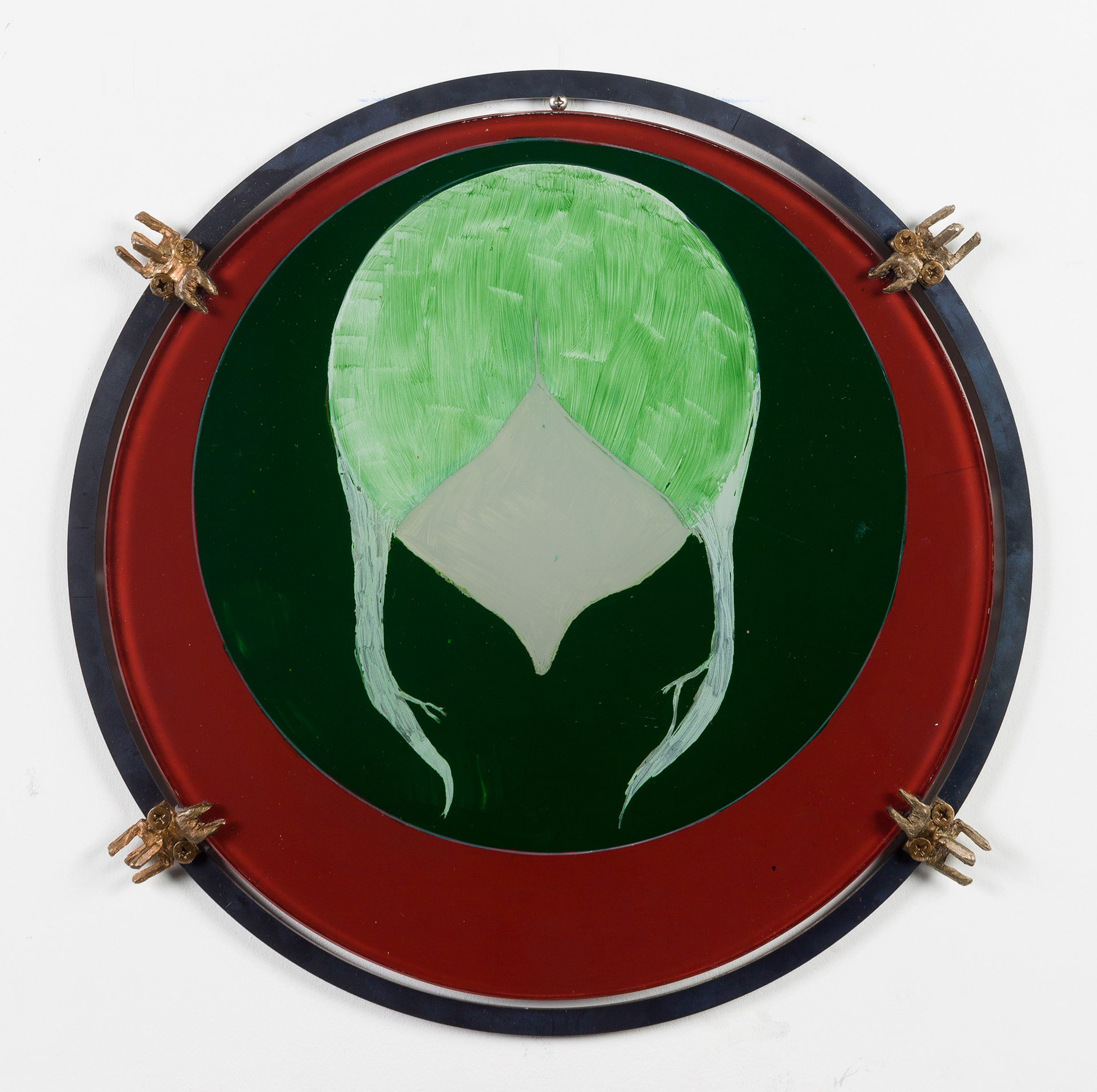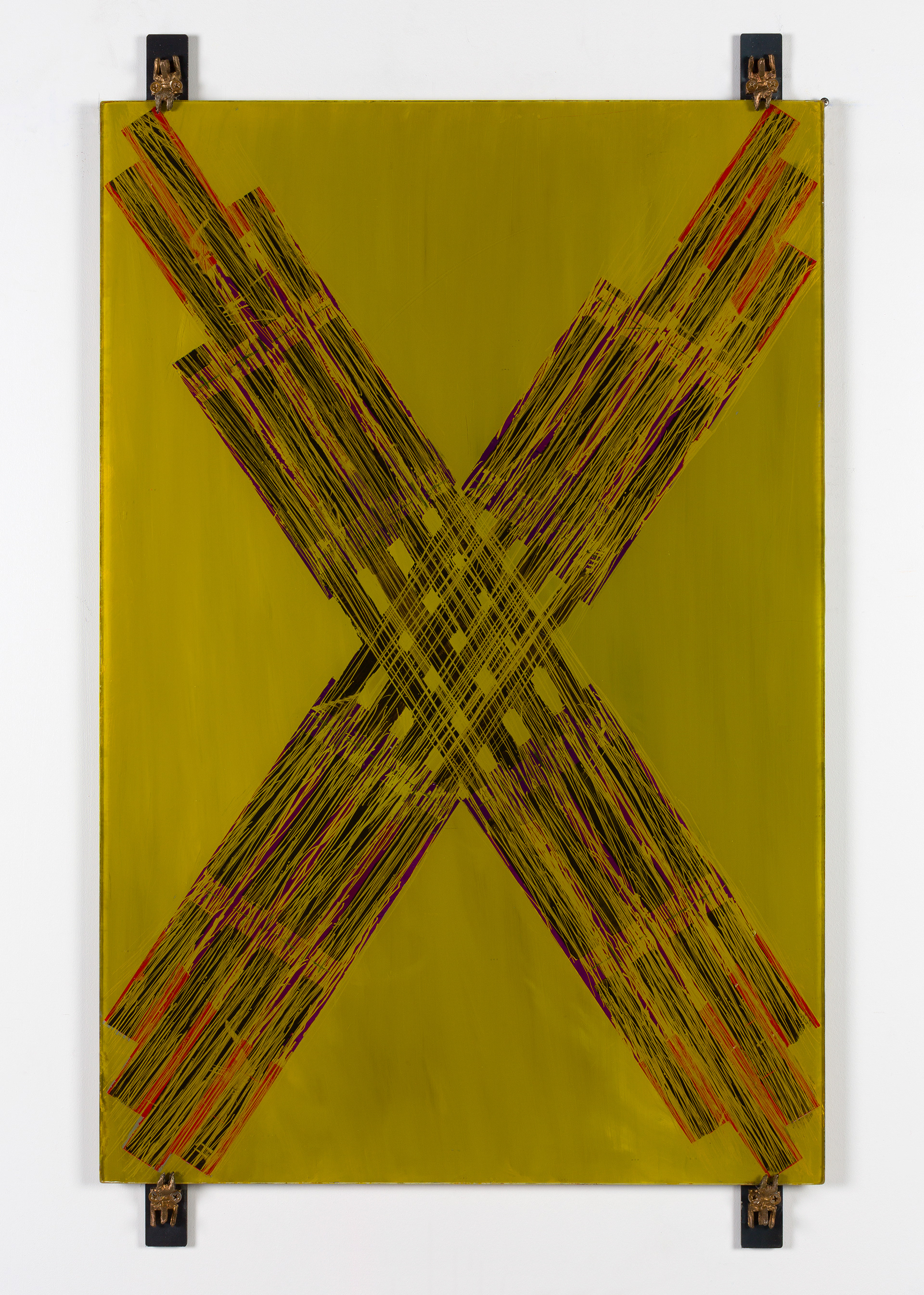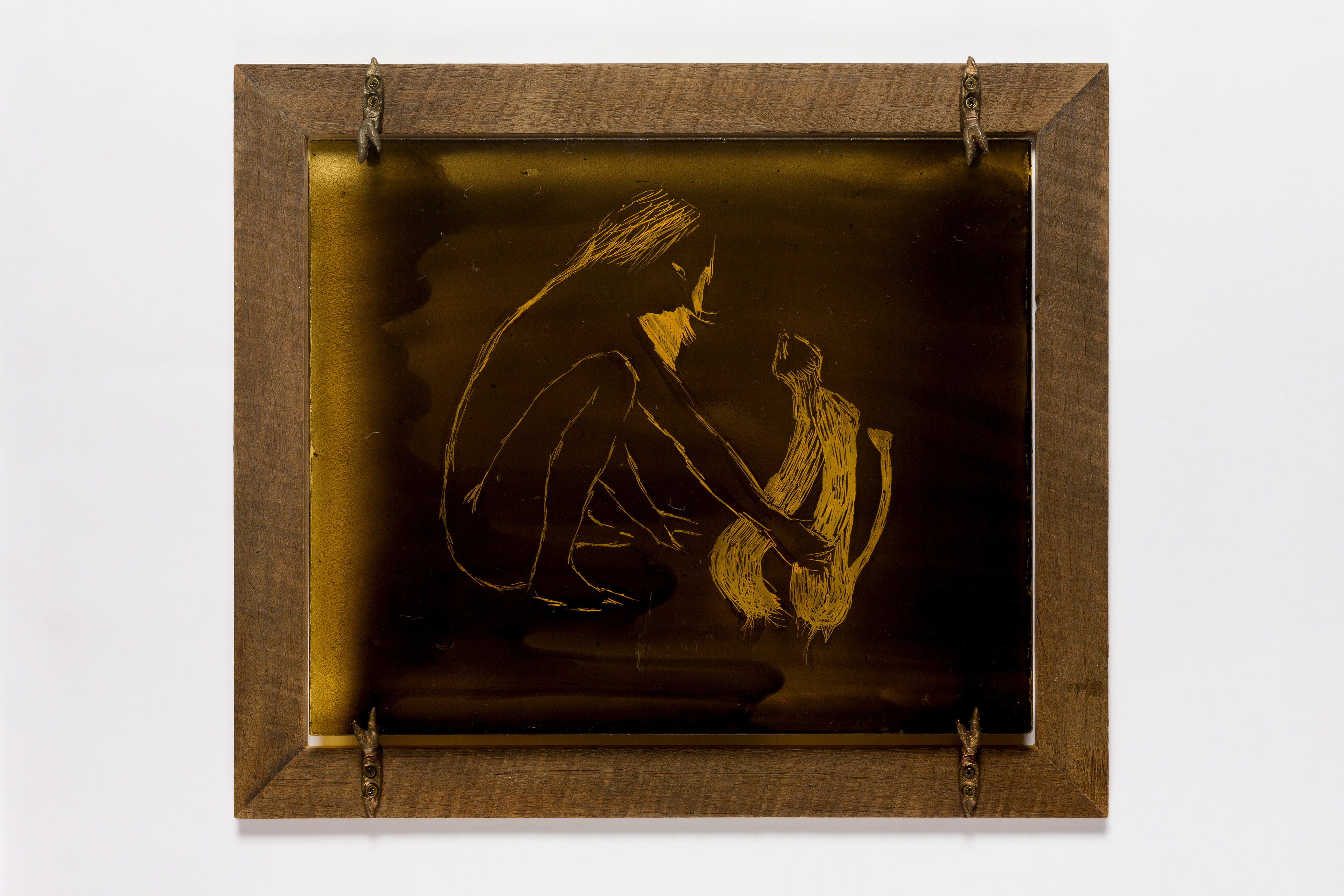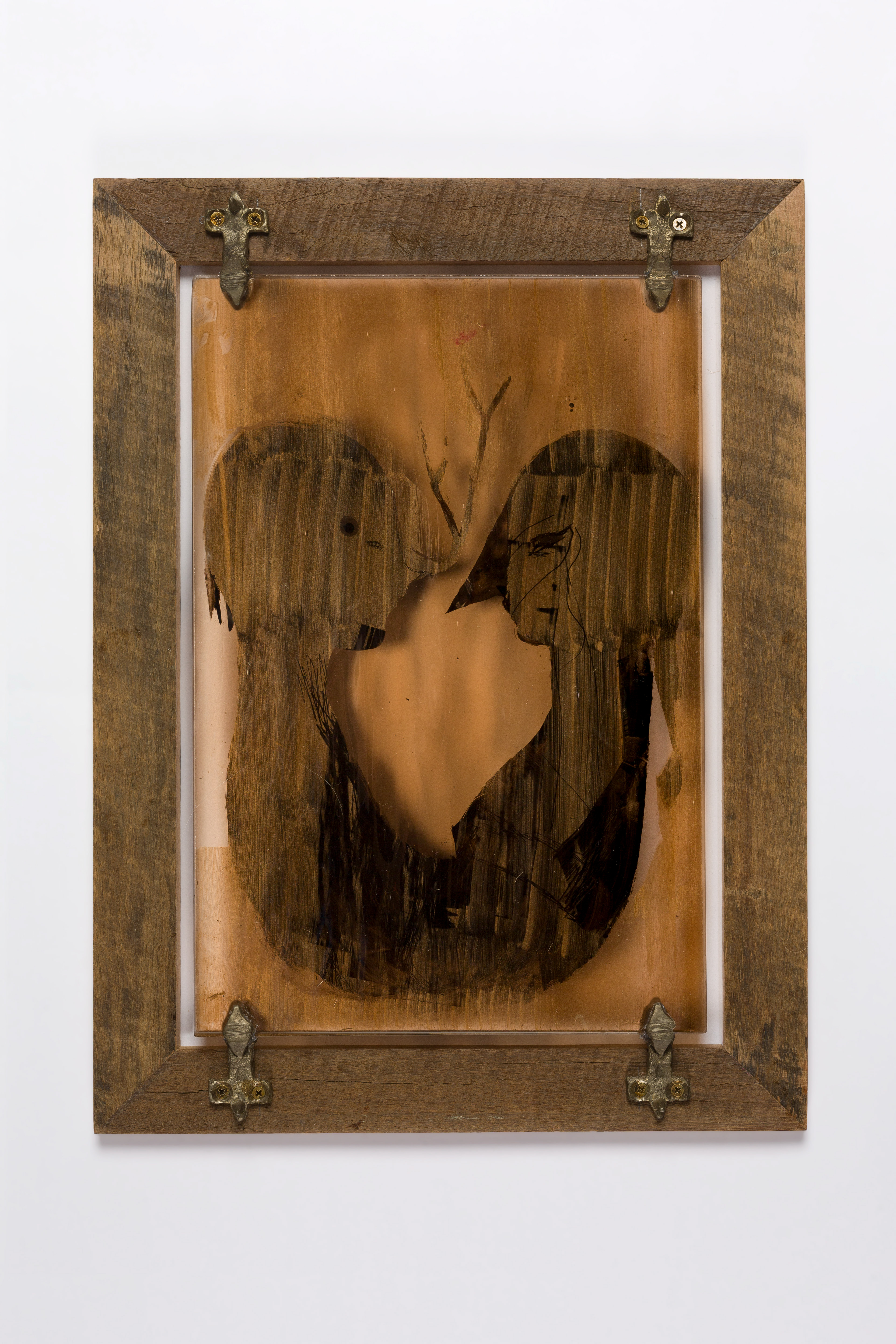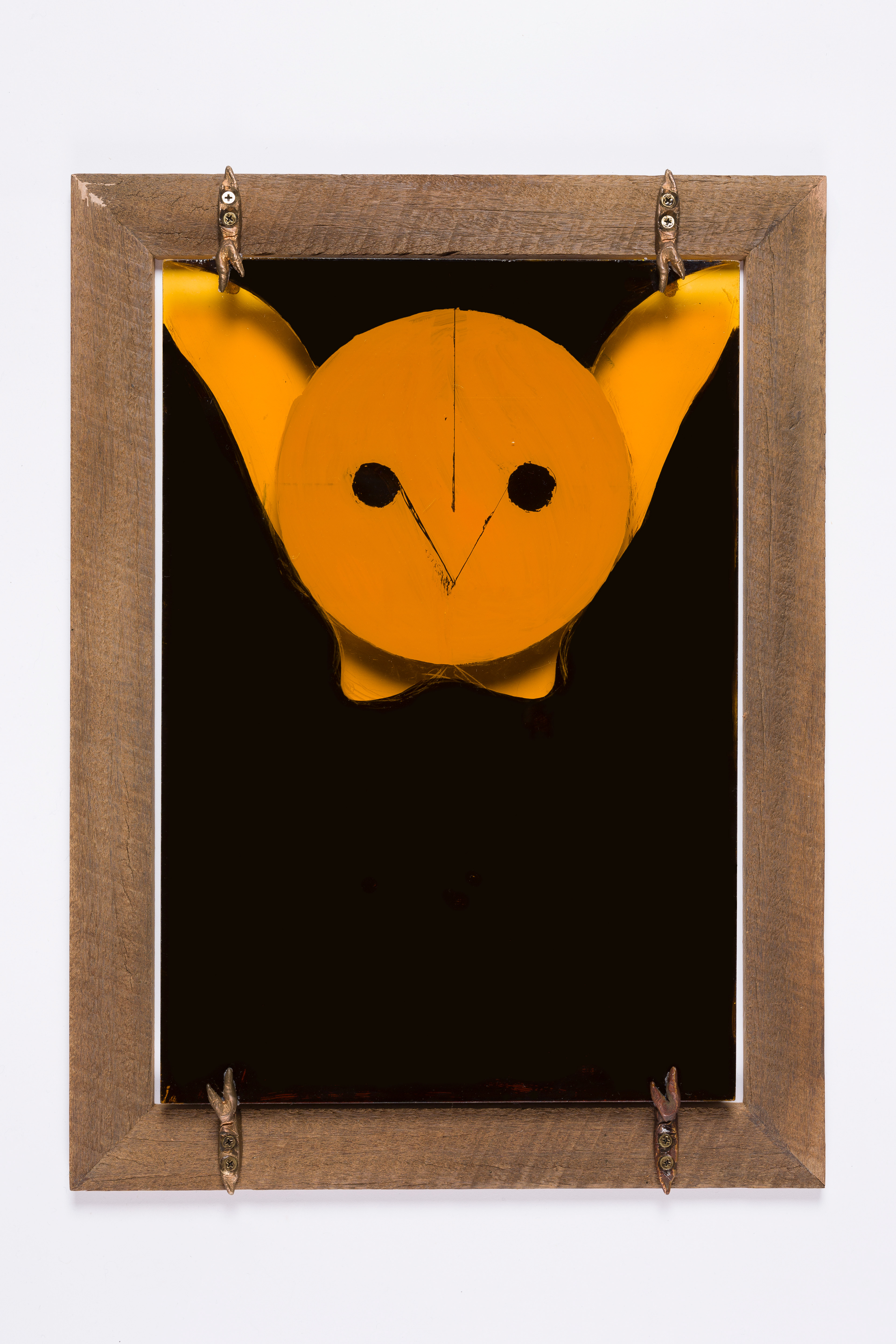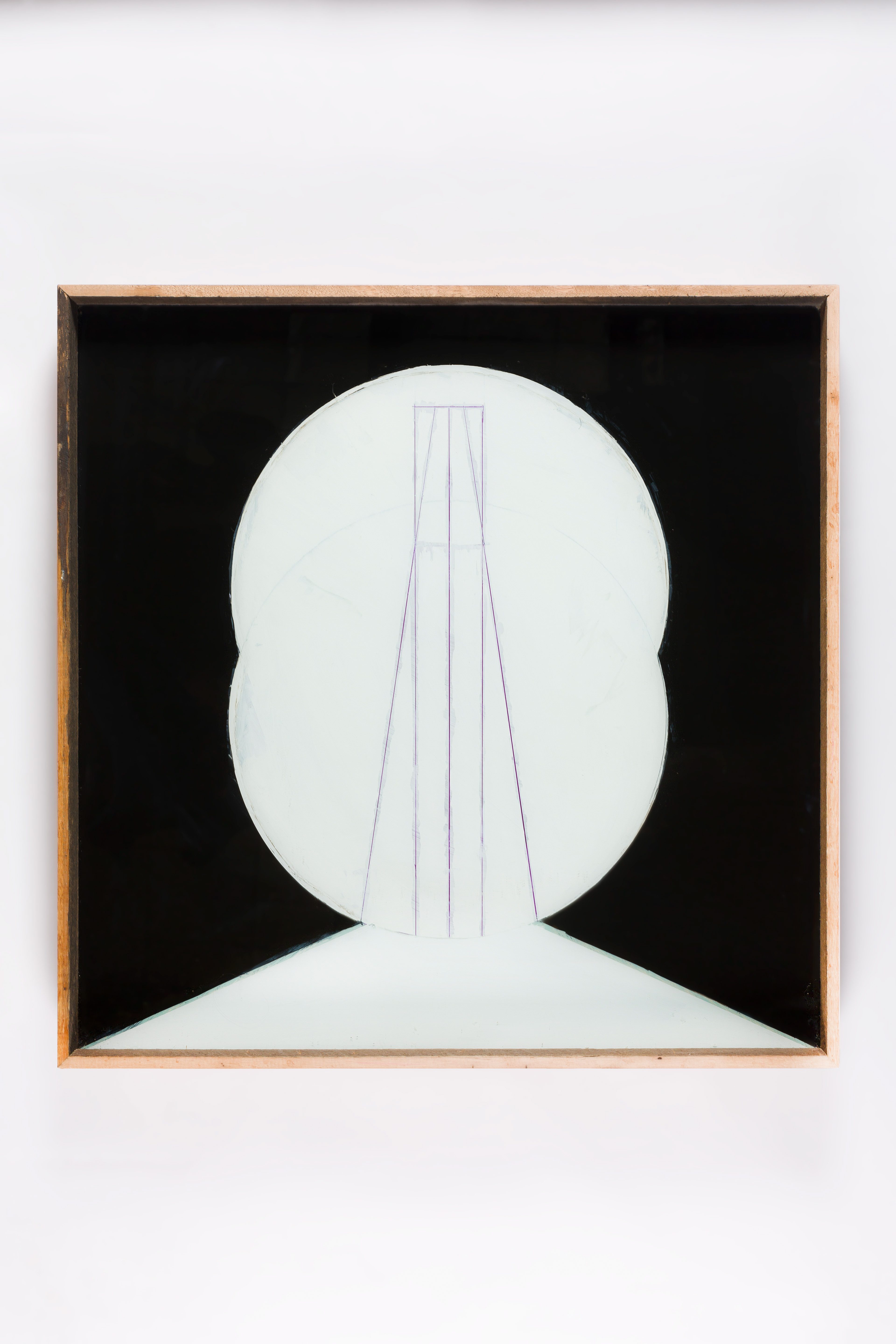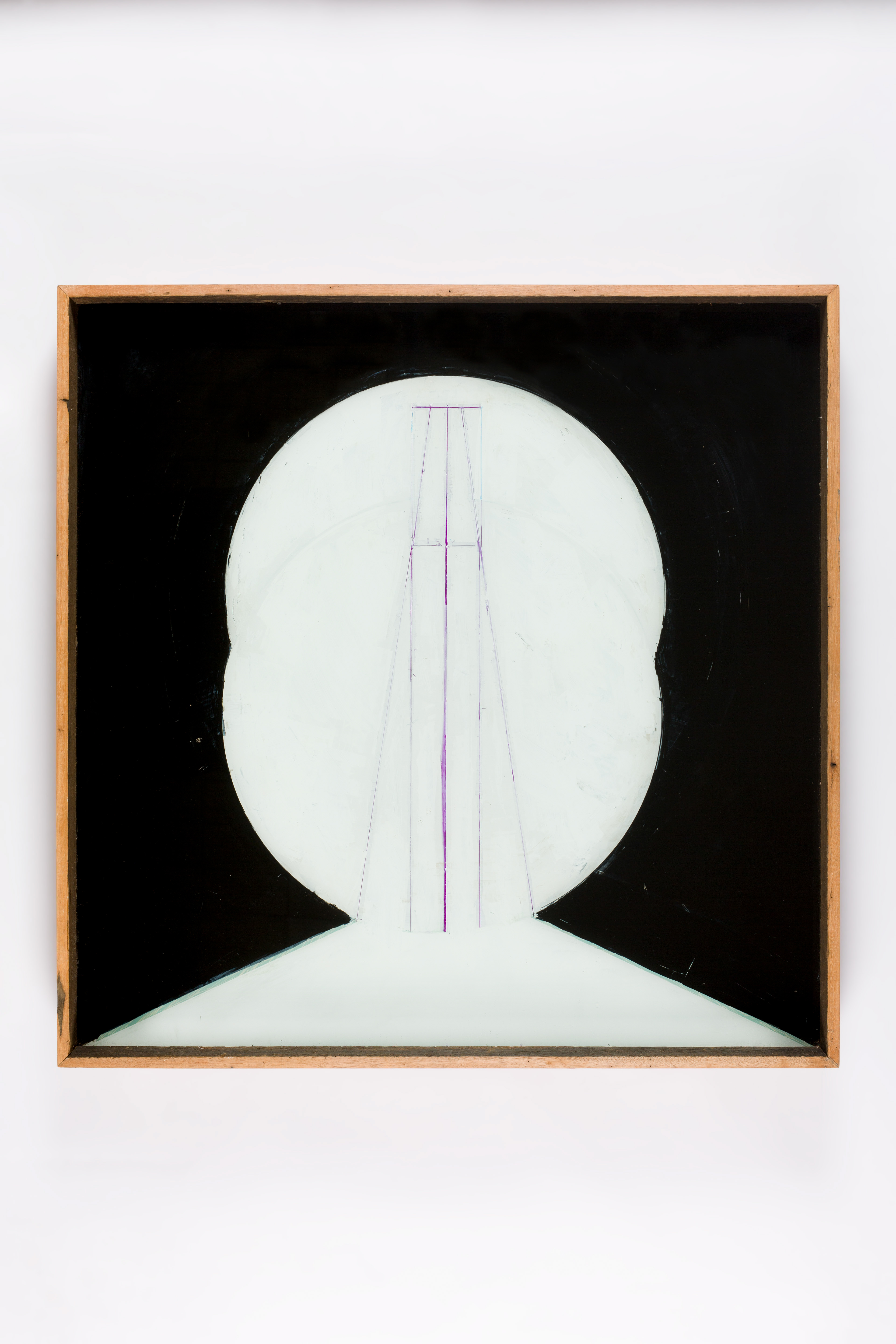"
Amelia Wallin; Revisiting Colour Problems: Emily Vanderpoel, Hilma Af Klint, Becca Albee, Clare Milledge; Artlink Issue 39:1 March 2019; p 30-35
Röthel, H. K., Kandinsky: Paintings on Glass (Hinterglasmalerei), The Solomon R. Guggenheim Foundation, New York, 1966.
The technique of painting in reverse on glass – known in German as hinterglasmalerei – reached modernism through Gabriele Münter and Vassily Kandinsky. It was Münter, Kandinsky’s partner and fellow member of Der Blaue Reiter, who began to collect glass paintings by amateur artists while travelling through rural Bavaria. Typically, these were small pictures of saints and biblical scenes that hung in homes, were sold in markets to supplement incomes, or given as gifts to family and friends. In other words, a very social and intimate form of spiritual image-making. It was this folkloristic spirituality that must have inspired Münter and Kandinsky (and, now, Milledge), since it had all the characteristics of a sincere and playful engagement with form. Here was a practice of embedding spiritual devotion into the medium, and the potential for art to offer moments of unashamed illumination, to join form and feeling, and connect the eye to what Kandinsky called the ‘inner vibrations’ of a painting. As Kandinsky wrote to Münter in an unpublished letter on January 31 1904, ‘The thing must ‘ring’, and through this ring one comes, slowly, to the content. This content, however, must never be too clear and simple; the more possibilities through fantasy the better’. Pure painting, as Kandinsky conceived of it, would speak directly to the soul of the viewer. Through form and colour, the picture would sneak past our intellectual defenses.
When I look at Milledge’s paintings leaning against the studio wall or in the museum, it is as though they have been squashed into existence and preserved behind glass. They offer images that can appear trapped and compressed, as though the glass has been placed on top of a picture that once held depth. A specimen made flat and abstract in its preservation. They are made, I learn, by painting in reverse. A pane of glass is placed against the wall or on the floor. Paint is applied in stages; shapes, figures, details and highlights are added, sometimes sections are scratched off, and the work is ‘finished’ with the background. Milledge then turns the glass around so that we see the image from the front. A strange effect! Bold and flat. Is this what drew Byzantine artists to this same technique when they represented saints? Or why, in the late eighteenth and early nineteenth century, this technique became popular with religious folk artists in Central Europe? Or why, in the twentieth century, the technique again gained significance in pursuit of abstraction? What is it about this technique that lends itself to a belief in the power of images? For there is something about painting in reverse and on the surface of glass that is curious, and not at all straightforward.
One clue might come from the way glass, unlike canvas, interacts so obviously and intimately with light, capturing and imparting the very source of what makes the world visible. It is a material that has always seemed close to the imagination and the divine for its potential to capture, distort, refract and reflect light. When Gothic architecture, for example, began to use stone more ambitiously, larger and larger openings allowed for windows to speak. From sand, potash and powered metals came stories in coloured patterns and illuminated figures. Inside a cathedral, for instance, light enters through these figures as the presence of the divine, animating the image and imbuing it with divinatory power (even with all the cracks and breaks that came about during the Protestant Reformation of the sixteenth and seventeenth centuries, glass retained many of its mysterious and paradisiacal qualities). In Milledge’s paintings, divinatory connotations linger in these works, but only as a vestige, muddled and mixed with all sorts of competing references and clues. What we are left with are images that protect and project themselves through the material. It is as if they have suddenly appeared like a stranger’s face in the window or, as it happens most mornings, in the mirror."
